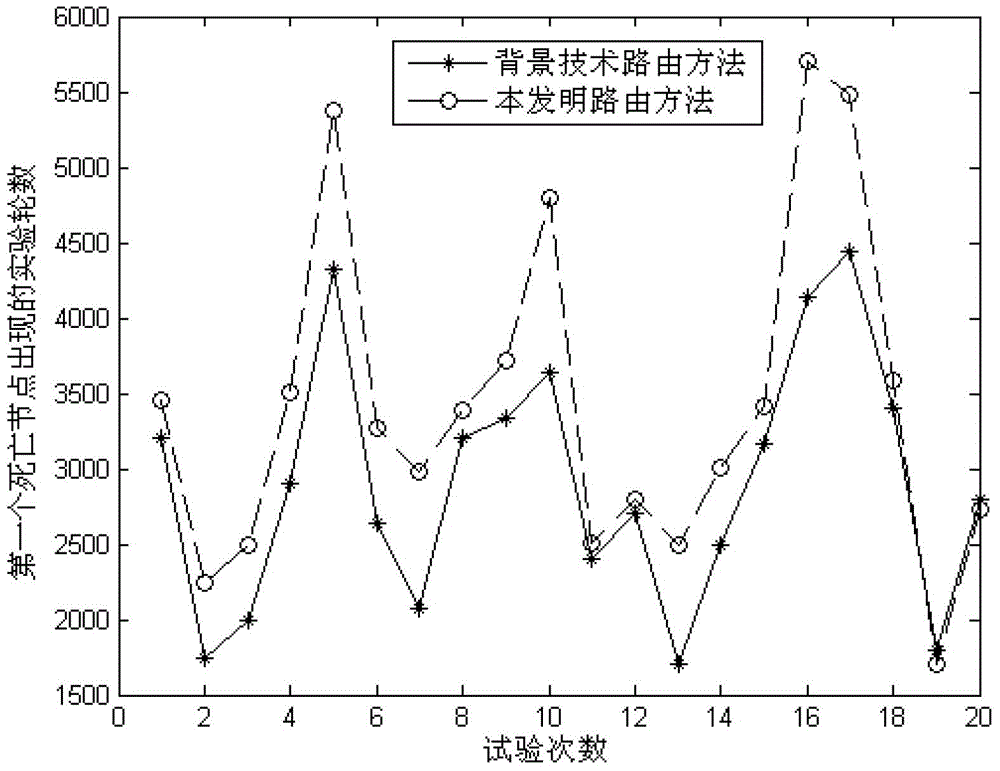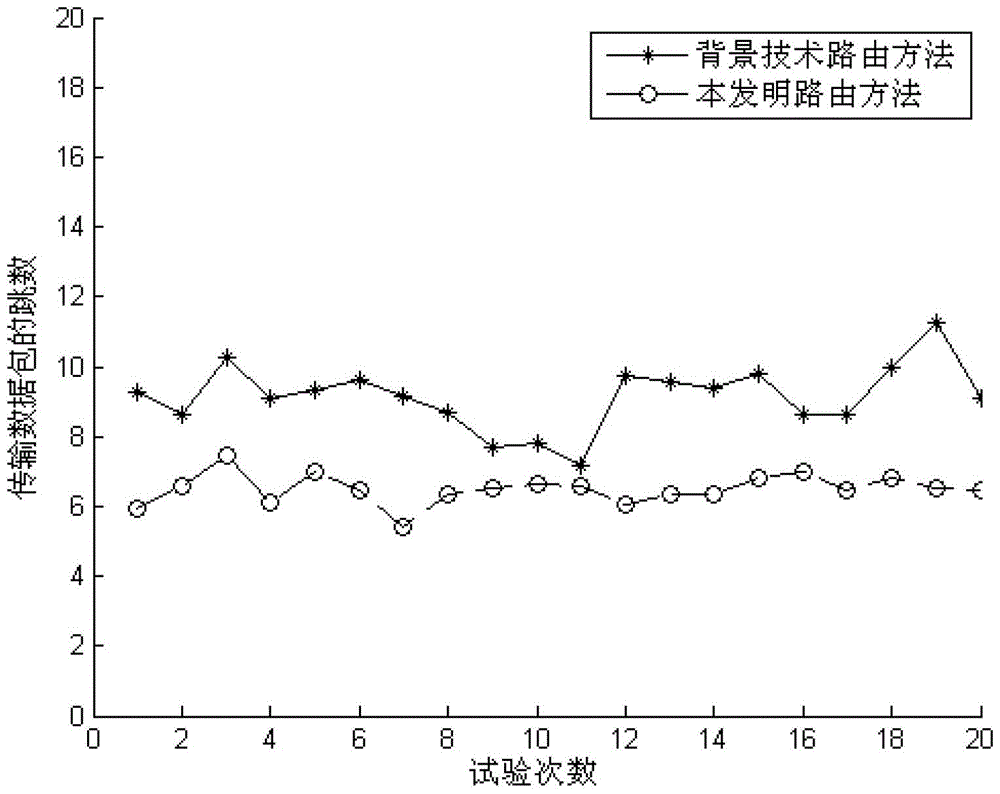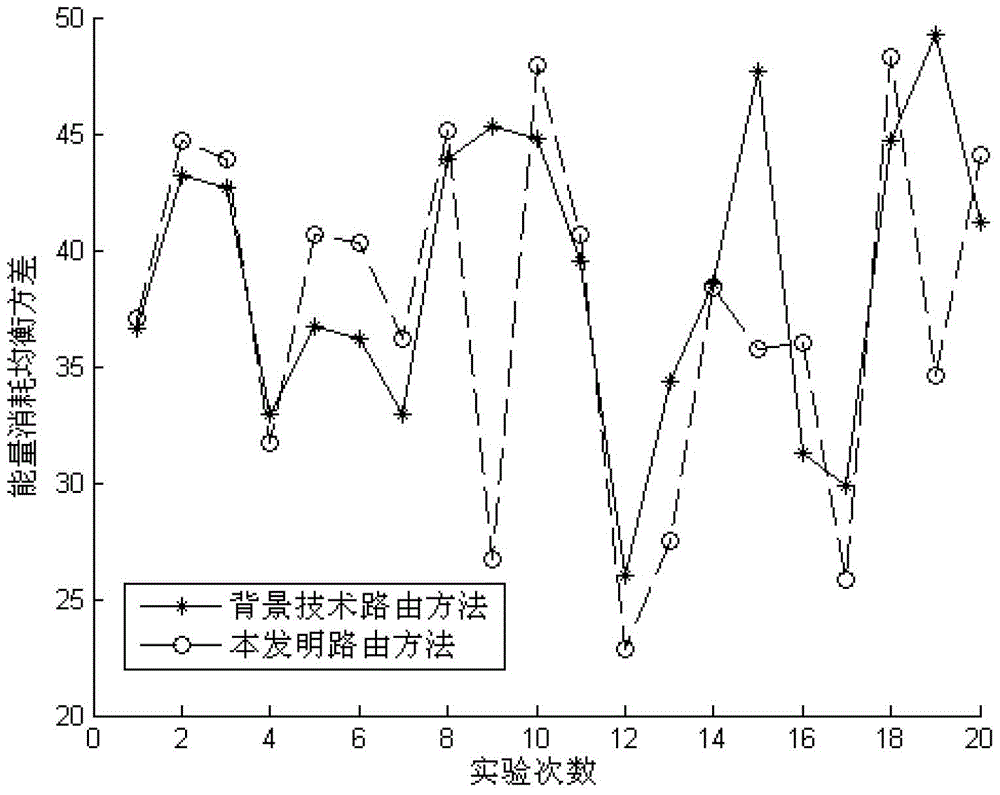A Routing Method for Balanced Energy Consumption
A technology of energy balance and routing, applied in the direction of reducing energy consumption, network traffic/resource management, advanced technology, etc., can solve the problem of not ensuring that data packets are finally transmitted to the sink node, affecting the smooth and efficient operation of the network, and restricting the effective transmission of data packets and other issues, to achieve the effect of energy balance consumption, reasonable network load sharing, and reduction of redundant hops
- Summary
- Abstract
- Description
- Claims
- Application Information
AI Technical Summary
Problems solved by technology
Method used
Image
Examples
Embodiment Construction
[0035] The simulation platform uses MATLAB, and 200 sensor nodes are randomly distributed in a circular area with a radius of 50 meters to form a sensing network through self-organization, and the converging node is located at the center of the circle. The initial energy of all sensor nodes is 200mj, and the maximum reference radius for sending and receiving is 10 meters. According to the free space energy model E Tx =kE Tx-elec +kε fs d 2 ,E Rx =kE Rx-elec It is estimated that the energy consumed by node transmission is 6nj, and the energy consumed by reception is 5nj, where k represents the size of the data packet, ε fs (free space free space) indicates the parameters of the free space energy model, d indicates the node emission distance (radius), E Tx-elec (transmit xmt electron transmission circuit) indicates the energy consumption of the transmission circuit, E Rx-elec (receive xmtlectron receiving circuit) indicates the energy consumption of the receiving circuit....
PUM
 Login to View More
Login to View More Abstract
Description
Claims
Application Information
 Login to View More
Login to View More - R&D
- Intellectual Property
- Life Sciences
- Materials
- Tech Scout
- Unparalleled Data Quality
- Higher Quality Content
- 60% Fewer Hallucinations
Browse by: Latest US Patents, China's latest patents, Technical Efficacy Thesaurus, Application Domain, Technology Topic, Popular Technical Reports.
© 2025 PatSnap. All rights reserved.Legal|Privacy policy|Modern Slavery Act Transparency Statement|Sitemap|About US| Contact US: help@patsnap.com



